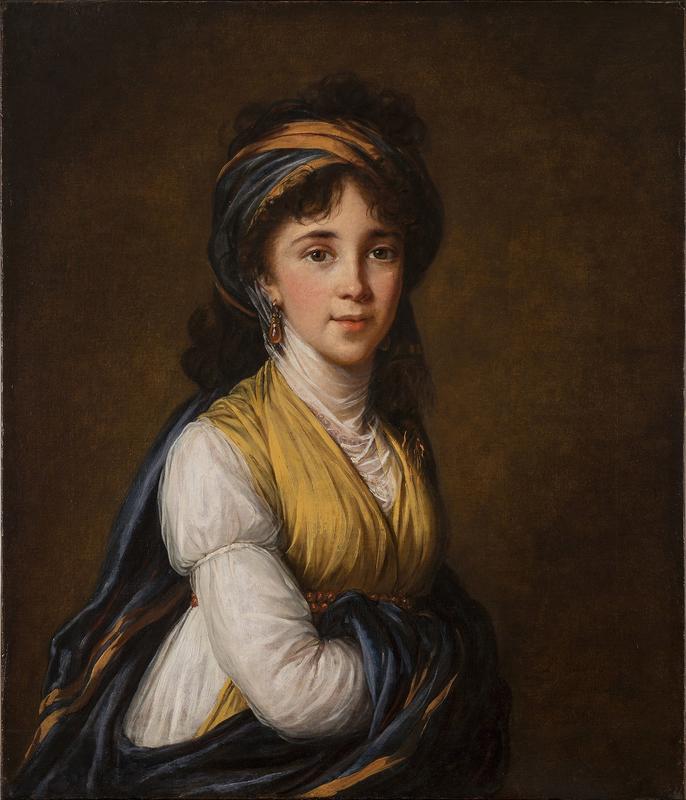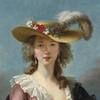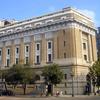More about Portrait of Princess Belozersky

Sr. Contributor
To escape the wrath of revolutionary France, Elisabeth Louise Vigée-LeBrun fled to Russia in search of safety, which is where she met Princess Anna Grigorievna Belosselsky Belozersky.
In 1779, Marie Antoinette summoned Vigée-LeBrun to Versailles to serve as portraitist to the queen. As we all know the story of what happened to Marie Antoinette, we know that with great power comes great responsibility – and danger. Unlike Jacques-Louis David, Vigée-LeBrun remained faithful to Louis XVI and the monarchy. However, this loyalty ultimately jeopardized the lives of Vigée-LeBrun and her daughter. Just ten years later, they fled at the first signs of revolution and traveled around Europe for a time. In 1795, they arrived in Saint Petersburg, Russia, where Catherine the Great welcomed them with open arms.
An admirer of European art and culture, Catherine sought to lift up Russia to the cultured status of Western Europe, and particularly of France. Well before Vigée-LeBrun’s arrival, Catherine started buying art often purchasing entire collections, laying the foundations for The State Hermitage Museum. Understandably, Catherine couldn’t wait to have such an acclaimed, French artist as Vigée-LeBrun working in Russia. Upon her arrival, Vigée-LeBrun soon began painting portraits of the Russian imperial court, including the royal family and other aristocrats.
Princess Anna Grigorievna Belosselsky Belozersky was one such aristocrat who received the royal treatment in a portrait by Vigée-LeBrun. Princess Belozersky was the younger of two daughters of Gregory Vassilievitch Kozitsky. Kozitsky was a writer and journalist before his most prestigious appointment as Catherine’s secretary of state. He was a loyal supporter who began serving at Catherine’s court in 1765, and he helped her to realize the cosmopolitan dreams she had for Saint Petersburg.
Vigée-LeBrun painted this portrait of the princess when she was just twenty-six years old. Known for making flattering images of her sitters, Vigée-LeBrun painted the princess much more modestly than how she would have actually dressed. In fact, many of Vigée-LeBrun’s aristocratic sitters preferred to be portrayed as ordinary people without all the trappings of their wealth. The French Revolution caused ostentatious displays of money and status fall out of vogue, at least in terms of fashion. Alas, fake modesty is easier than the real thing.
Don’t let Princess Belozersky fool you into thinking she’s the meek and humble girl you see in this portrait. Born Anna Grigorievna Kozitskaya, she was the second wife of Prince Alexander Mikhailovitch Belosselsky, who took over in 1800 and ruled for four years as the successor to Catherine the Great. Even before she married into the royal family, Princess Belozersky’s mother, Ekaterina Ivanovna Myasnikova, left her a huge inheritance, which funded additions to the already-lavish Belosselsky-Belozersky Palace, which still stands on the banks of the Fontanka River in Saint Petersburg.
Sources
- European Royal History. “Grand Duke Serge Alexandrovich of Russia’s Palace Goes Up in Flames.” Eurohistory. http://erhj.blogspot.com/2012/02/grand-duke-serge-alexandrovich-of.html. Accessed 18 January 2021.
- Flint, Melanie Desliens. “She escaped the Guillotine in France to conquer Russia, how the exceptional Elizabeth Vigée-Le Brun imposed her style in exile.” Medium. 15 May 2017. https://medium.com/@melaniedesliensflint/she-escaped-the-guillotine-in-…
- Guerrilla Girls. The Guerrilla Girls’ Bedside Companion to the History of Western Art. New York: Penguin Books, 1998.
- Koeppe, Wolfram. “Saint Petersburg.” In Heilbrunn Timeline of Art History. Department of European Sculpture and Decorative Arts. The Metropolitan Museum of Art. October 2003. https://www.metmuseum.org/toah/hd/stpt/hd_stpt.htm. Accessed 18 January 2021.
- National Museum of Women in the Arts. “Portrait of Princess Belozersky.” Collection. https://nmwa.org/art/collection/portrait-princess-belozersky/. Accessed 18 January 2021.
- Saint Petersburg State University. “Kozitsky Grigory.” The Study of Religion in Russia in the 18th – first half of the 20th Cent.” Articles. https://relstud-hist.spbu.ru/en/articles/en-kozickij-grigorij-vasilevic. Accessed 18 January 2021.
- The Metropolitan Museum of Art. “France, 1600–1800 A.D.” In Heilbrunn Timeline of Art History. https://www.metmuseum.org/toah/ht/09/euwf.html. Accessed 18 January 2021.
- The State Hermitage Museum. “Catherine the Great.” What’s On. https://www.hermitagemuseum.org/wps/portal/hermitage/what-s-on/temp_exh…. Accessed 18 January 2021.
- The State Hermitage Museum. “Self-Portrait.” Art Works. https://www.hermitagemuseum.org/wps/portal/hermitage/digital-collection…. Accessed 18 January 2021.











